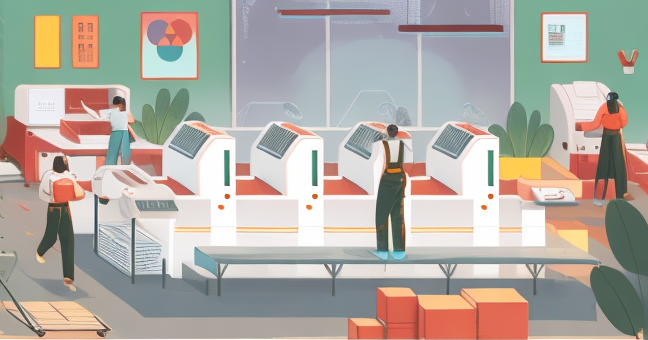
Flexographic printing (flexo) and digital printing are two distinct methods widely used in the flexible-film printing industry. Each has its own unique advantages and applications. Let’s delve into a comparison of these two techniques:
Flexo Printing
Process and Technology: Flexo is a traditional printing process that uses flexible plates to transfer ink onto a substrate (material). It’s commonly used for packaging materials like labels, film flexible packaging, corrugated boxes, and more.
Setup Time: Flexo printing may have a longer setup time compared to digital printing. This is due to the creation of physical printing plates and the need for adjustments in ink transfer and registration.
Cost-Effectiveness: Flexo printing is highly cost-effective for large production runs. Once the initial setup is complete, the cost per unit decreases as the quantity increases. It’s often preferred for high-volume print jobs.
Color Options: Flexo printing typically uses a limited number of ink colors, often using the CMYK color model plus spot colors. Custom color mixing is possible, but it might require additional setup.
Substrate Compatibility: Flexo is versatile and works well on a wide range of substrates, including various types of paper, plastic, and even certain non-porous materials.
Print Quality: Flexo, is a true marvel of the printing world. Its unmatched ability to infuse vibrant, rich colors onto various substrates, while maintaining precision in intricate details, is remarkable.
Digital Printing:
Process and Technology: Digital printing is a non-contact printing method where digital files are directly printed onto a substrate using inkjet. It eliminates the need for physical printing plates.
Setup Time: Digital printing has minimal setup time since there are no plates to create or adjust. This makes it ideal for short runs and for constant-changing data printing.
Cost-Effectiveness: Digital printing is cost-effective for short to medium print runs. It doesn’t require the same setup costs as flexo printing, making it suitable for on-demand or personalized printing.
Color Options: Digital printing can reproduce a wide range of colors with up to 97% Pantone-Matching accuracy. Some digital printers also offer additional ink channels for spot colors and special effects.
Substrate Compatibility: Digital printing works well with a variety of substrates, including paper, plastic, films, and even some textured materials. However, substrate properties and coatings can affect print quality.
Print Quality: Digital printing, especially high-quality inkjet digital printing, can achieve very high resolutions. This means it can reproduce fine details, small text, and intricate graphics with exceptional clarity and sharpness.
Choosing Between Flexo and Digital Printing:
The choice between flexo and digital printing depends on factors such as the print run length, substrate type, design complexity, color accuracy, and budget. Flexo is better suited for large production runs with consistent designs, while digital printing excels in short runs that have constant changing data.
Want to learn more? Reach out to us!
Phone: +1 (956) 630-4403
—
Author: Sam Sanchez ✌️
Email: sam@identipak.com
Phone: +1 (956) 630-4403; Ext 250
